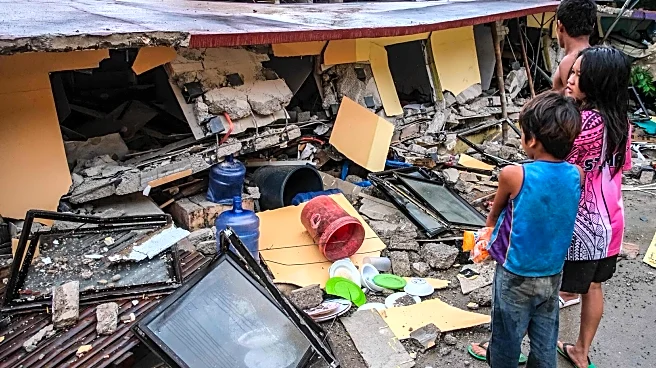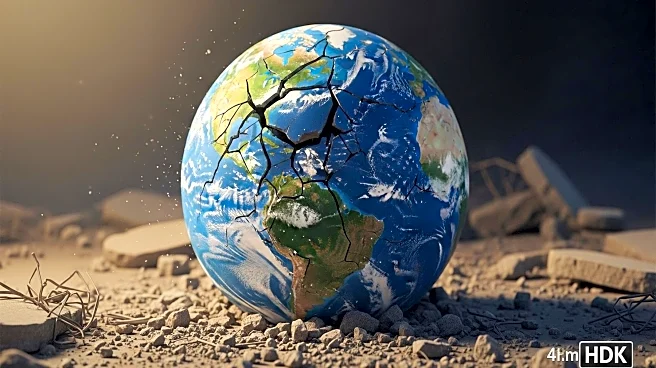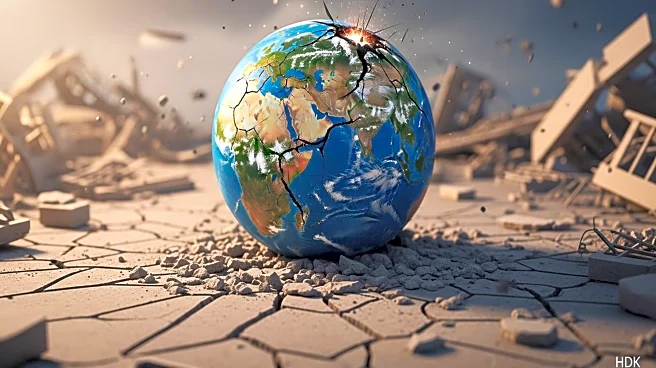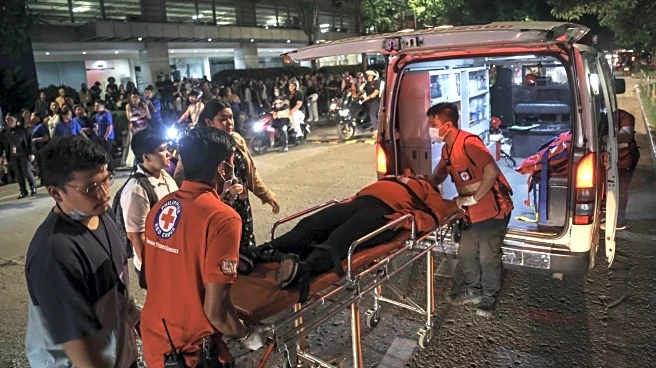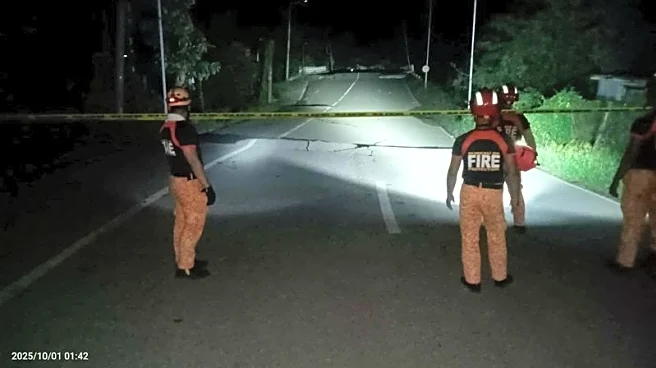What's Happening?
A 6.9-magnitude earthquake struck the central Philippines, particularly affecting Cebu province, late Tuesday. The earthquake resulted in the collapse of walls and buildings, leading to at least 31 fatalities and numerous injuries. The epicenter was located about 19 kilometers northeast of Bogo, a coastal city in Cebu province. The earthquake caused power outages and sent residents fleeing their homes. Disaster-mitigation officers reported that the death toll is expected to rise as rescue efforts continue, particularly in areas affected by landslides. The Philippine Institute of Volcanology and Seismology issued a brief tsunami warning, which was later lifted as no unusual waves were detected.
Why It's Important?
The earthquake highlights the vulnerability of the Philippines to natural disasters due to its location on the Pacific 'Ring of Fire.' The region is prone to seismic and volcanic activities, as well as frequent typhoons and storms. The disaster has significant implications for the local population, infrastructure, and emergency response systems. The immediate impact includes loss of life, injuries, and damage to buildings and roads, which will require substantial recovery efforts. The event underscores the need for improved disaster preparedness and response strategies in the Philippines, a country that regularly faces such challenges.
What's Next?
Rescue operations are ongoing, with efforts focused on transporting equipment to aid in search and rescue in affected areas. Local authorities are assessing the extent of the damage and coordinating relief efforts. The situation is compounded by the recent impact of a tropical storm that hit the region, causing additional fatalities and damage. The government and disaster response teams are likely to face increased pressure to provide aid and support to affected communities, as well as to implement measures to prevent future disasters.
Beyond the Headlines
The earthquake may lead to long-term shifts in how the Philippines approaches disaster management and infrastructure development. There could be increased investment in building resilient structures and enhancing early warning systems. The event also raises ethical considerations regarding the allocation of resources and support for vulnerable communities, particularly in rural and impoverished areas.

